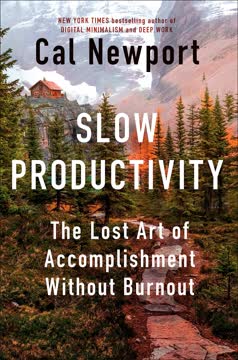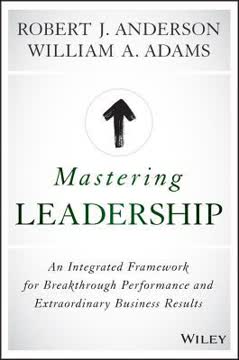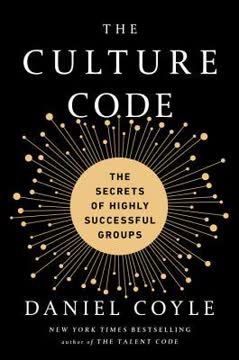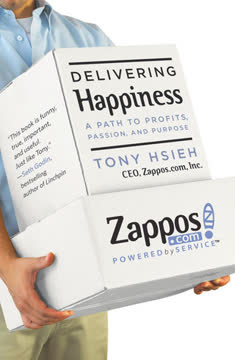Key Takeaways
1. Customer Success is vital in the subscription economy
In the subscription economy, you never stop working to win your customers.
Recurring revenue model. The shift to subscription-based business models has fundamentally changed the relationship between vendors and customers. Unlike traditional one-time sales, subscription businesses rely on ongoing customer satisfaction and retention to generate long-term value. This model puts customers in control, as they can easily switch providers if not satisfied.
Customer lifetime value. In subscription businesses, the initial sale often represents less than 10% of a customer's total lifetime value. The majority of revenue comes from renewals and upsells over time. This makes customer success crucial for business growth and profitability.
Churn prevention. Customer success teams play a vital role in reducing churn – the loss of customers over time. Even small improvements in retention rates can significantly impact a company's bottom line. For example, reducing monthly churn from 8% to 7% can dramatically increase annual recurring revenue and overall business health.
2. Shift from personal relationships to scalable customer success
You can no longer build loyalty through personal relationships.
Technology-driven approach. As businesses scale, it becomes impossible to maintain deep personal relationships with every customer. Instead, companies must leverage technology and data to deliver personalized, relevant experiences at scale.
Segmentation and prioritization. Customer success teams need to segment their customer base and prioritize interactions based on factors such as:
- Customer health score
- Contract value
- Renewal date
- Product usage patterns
- Support ticket history
Multi-touch model. Successful companies employ a mix of high-touch, low-touch, and tech-touch strategies to engage customers efficiently:
- High-touch: Dedicated account management for top-tier clients
- Low-touch: Periodic check-ins and targeted interventions
- Tech-touch: Automated communications, in-app guidance, and self-service resources
3. Product is the ultimate differentiator in customer success
A well-designed product that enables self-sufficiency and delivers value is crucial to customer success.
Product-led growth. In the subscription economy, the product itself becomes the primary driver of customer acquisition, retention, and expansion. A great product that delivers clear value and is easy to use can reduce the need for extensive customer support and success interventions.
Continuous improvement. Companies must obsess over product quality and user experience, constantly gathering feedback and iterating based on customer needs. This includes:
- Intuitive user interfaces
- Self-service capabilities
- Robust analytics and reporting features
- Regular feature updates and enhancements
Customer feedback loop. Establish clear channels for customers to provide input on product direction, such as:
- Product advisory councils
- Beta testing programs
- In-app feedback mechanisms
- User research and usability testing
4. Measure and manage customer health relentlessly
Relentlessly. Monitor. And Manage. Customer Health.
Health score components. Develop a comprehensive customer health score that incorporates multiple data points:
- Product adoption and usage metrics
- Support ticket volume and resolution times
- NPS and other satisfaction scores
- Contract growth and upsells
- Invoice payment history
- Executive relationship strength
Early warning system. Use health scores to identify at-risk customers before they churn. Set up alerts and action plans for customers whose scores drop below certain thresholds.
Data-driven interventions. Leverage health score insights to prioritize customer outreach and tailor interventions. For example:
- Proactive training for customers with low product adoption
- Executive engagement for accounts with weakening relationships
- Targeted upsell campaigns for high-health customers
5. Improve time-to-value to drive customer success
Obsessively improving time-to-value is the way to address this challenge.
Quick wins. Focus on delivering initial value as quickly as possible after a customer purchases your product. This builds momentum and reinforces the customer's decision to buy.
Phased implementation. Break down complex implementations into smaller, manageable phases that deliver incremental value. For example:
- Basic functionality to solve immediate pain points
- Advanced features for power users
- Integration with other systems for workflow optimization
Success milestones. Work with customers to define clear success criteria and track progress towards these goals. Regularly review and celebrate achievements to maintain engagement and demonstrate ongoing value.
6. Sell to the right customers for long-term success
Ninety percent of all churn happens at the time of sale.
Ideal customer profile. Develop a clear understanding of your ideal customer based on factors such as:
- Industry vertical
- Company size
- Use case alignment
- Technical capabilities
- Cultural fit
Qualification process. Implement a rigorous sales qualification process to ensure prospects are a good fit for your product. This may include:
- Discovery calls to assess needs and expectations
- Trial periods or proof of concept projects
- Stakeholder alignment checks
Say no when necessary. Be willing to walk away from deals that don't align with your ideal customer profile, even if they represent short-term revenue. The long-term costs of servicing misaligned customers often outweigh the initial benefits.
7. Data-driven approach is essential for customer success
You can't improve what you don't measure.
Centralized customer data. Aggregate data from multiple sources to create a comprehensive view of customer health and engagement:
- CRM system
- Product usage logs
- Support ticket history
- Billing and invoicing records
- Marketing engagement data
Key metrics. Define and track critical customer success metrics, such as:
- Gross retention rate
- Net retention rate (including upsells/expansions)
- Time to first value
- Product adoption rate
- Customer Lifetime Value (CLV)
Predictive analytics. Leverage machine learning and AI to identify patterns and predict customer behavior, enabling proactive interventions and personalized experiences.
8. Customer success requires company-wide commitment
Customer success is not just a department or an organization. It's a philosophy that must pervade your entire company.
Cross-functional alignment. Ensure all departments understand their role in driving customer success:
- Product: Prioritize features that drive adoption and retention
- Sales: Focus on selling to ideal-fit customers
- Marketing: Develop messaging that sets realistic expectations
- Finance: Align metrics and incentives with customer success goals
Executive sponsorship. Customer success must be championed at the highest levels of the organization. This includes:
- Regular customer success reviews in executive meetings
- Customer-centric KPIs for all leadership roles
- Investment in customer success technology and resources
Culture of customer-centricity. Foster a company-wide mindset that prioritizes customer outcomes over short-term gains. This may involve:
- Customer success training for all employees
- Sharing customer stories and feedback across the organization
- Recognizing and rewarding customer-centric behaviors
9. The rise of the Chief Customer Officer (CCO)
The subscription economy puts the customer in charge much more than was previously true.
Strategic importance. The CCO role has emerged as a critical executive position, reflecting the increasing importance of customer retention and expansion in subscription businesses.
Broad responsibilities. The modern CCO typically oversees multiple customer-facing functions:
- Customer Success
- Professional Services
- Training and Enablement
- Customer Support
- Customer Marketing
Data-driven leadership. Successful CCOs leverage customer data and analytics to drive strategic decisions and demonstrate the impact of customer success initiatives on key business metrics like retention, expansion, and overall company growth.
Last updated:
FAQ
What is Customer Success: How Innovative Companies Are Reducing Churn and Growing Recurring Revenue by Nick Mehta about?
- Focus on subscription economy: The book explores how the rise of subscription-based business models, especially in SaaS, has made customer success essential for company survival and growth.
- Customer success as a philosophy: It defines customer success as both a discipline and a company-wide mindset focused on ensuring customers achieve their desired outcomes.
- Historical context: The book traces the evolution of customer success, highlighting its roots in early SaaS companies and the challenges of managing churn.
- Practical guidance: Readers receive actionable advice on structuring customer success teams, managing customer health, and aligning the entire organization around customer retention and growth.
Why should I read Customer Success by Nick Mehta?
- Understand churn’s impact: The book reveals how unchecked churn can undermine recurring revenue businesses and why proactive customer success is vital for sustainable growth.
- Comprehensive framework: It offers a detailed, practical framework for building and scaling customer success organizations, relevant to SaaS and other subscription-based businesses.
- Cross-functional insights: Readers learn how customer success influences sales, product, marketing, and services, and how to align these functions for maximum customer lifetime value.
- Future-proof your business: The book prepares leaders for the demands of the subscription economy, emphasizing that customer success is now a business imperative.
What are the key takeaways and concepts from Customer Success by Nick Mehta?
- Subscription economy shift: The move from one-time sales to recurring revenue models puts power in the hands of customers, making retention and customer success critical.
- Proactive vs. reactive: Customer success is about proactively ensuring customers achieve value, not just reacting to problems.
- Attitudinal vs. behavioral loyalty: The book distinguishes between customers who stay because they love the product and those who stay due to lack of alternatives, aiming to foster true loyalty.
- The Ten Laws of Customer Success: Mehta introduces ten foundational principles for effective customer success, such as selling to the right customer and relentlessly managing customer health.
How does Nick Mehta define and differentiate customer success from customer support in Customer Success?
- Revenue-driven vs. cost center: Customer success teams focus on renewals and upsells, directly impacting revenue, while support is typically a cost center handling reactive problem resolution.
- Proactive vs. reactive: Customer success proactively monitors customer health and intervenes before issues arise; support responds to incoming problems.
- Different metrics: Customer success is measured by retention and growth, while support is measured by efficiency metrics like case resolution time.
- Organizational separation: The book recommends keeping customer success and support as separate organizations to maintain focus and clarity.
What is the "subscription tsunami" described in Customer Success by Nick Mehta, and why does it matter?
- Industry-wide shift: The "subscription tsunami" refers to the rapid movement of industries toward subscription and pay-as-you-go models, driven by technology and customer demand for flexibility.
- Recurring revenue focus: This shift changes how companies generate revenue, emphasizing long-term relationships over one-time sales.
- Customer empowerment: Customers can easily switch providers, making retention and customer success more important than ever.
- Broad applicability: While SaaS led the way, these principles now apply across many industries adopting subscription models.
What are the "Ten Laws of Customer Success" outlined by Nick Mehta, and why are they important?
- Strategic framework: The Ten Laws provide a blueprint for excelling in customer success, covering everything from customer selection to organizational commitment.
- Examples of laws: Key laws include selling to the right customer, proactively managing customer health, and making customers wildly successful.
- Cross-industry relevance: While some laws are SaaS-specific, most apply to any business with recurring revenue or customer relationships.
- Execution guidance: The laws stress data-driven decisions, proactive engagement, and company-wide alignment to reduce churn and drive growth.
How does Customer Success by Nick Mehta explain and manage the concept of customer health?
- Predictive health scores: Customer health is measured using a composite score based on product usage, support interactions, survey results, and contract growth.
- Continuous monitoring: The book emphasizes relentless, proactive monitoring to identify risks early and take corrective action.
- Actionable insights: Health scores should be broken down into components, allowing customer success managers to target specific areas for improvement.
- Role of technology: Automated systems and analytics are essential for scalable, effective customer health management.
What are the different customer success engagement models described in Customer Success by Nick Mehta?
- High-touch model: Personalized, frequent, and often face-to-face engagement for high-value customers, with dedicated managers and tailored interactions.
- Low-touch model: A hybrid approach combining some personal interaction with automated or group communications, suitable for mid-tier customers.
- Tech-touch model: Scalable, technology-driven engagement using automated emails, webinars, and self-service resources for large volumes of low-value customers.
- Tailored approach: The book stresses matching the engagement model to customer value and needs for optimal resource allocation and retention.
How does Nick Mehta’s Customer Success address the challenge of selling to the right customer?
- Product-market fit alignment: Selling to customers who fit the ideal profile ensures higher retention and better long-term value.
- Data-driven qualification: The book advocates using data to identify successful customer characteristics and disqualify likely churners.
- Cross-functional collaboration: Sales, marketing, and customer success must work together to focus on the right customers and avoid resource drain.
- Leadership commitment: Executive support is crucial, including giving customer success veto power over risky deals.
What is the role of the Chief Customer Officer (CCO) according to Customer Success by Nick Mehta?
- Evolving executive role: The CCO is responsible for the total customer relationship, a role that has grown with the rise of subscription and SaaS models.
- Cross-functional leadership: The CCO often oversees post-sales functions like professional services, training, support, onboarding, and customer success.
- Strategic impact: The CCO drives retention, renewal, and upsell, integrating sales consulting and customer marketing to align the entire customer journey.
- Company-wide influence: The CCO ensures that customer success is a top-down, organization-wide priority.
How does Customer Success by Nick Mehta recommend measuring churn, retention, and customer success outcomes?
- Clear metric definitions: The book stresses the importance of defining churn and retention metrics by customer or contract, including new CMRR, add-ons, renewals, and churn.
- Granular tracking: Break down renewals into cancellations, downgrades, upgrades, and archives to identify issues and opportunities.
- Forecasting and alignment: Use expected CMRR and at-risk churn indicators for accurate forecasting and executive alignment.
- Three metric categories: Measure customer/user behavior, CSM activities, and business outcomes to manage and optimize customer success.
What does an ideal modern customer success experience look like according to Nick Mehta’s Customer Success?
- Automated and personalized: The best experience combines automated triggers (welcome emails, surveys, usage alerts) with personalized outreach from customer success managers.
- Proactive risk management: Early identification of risks, such as delayed onboarding or low product usage, enables timely interventions.
- Customer delight: Moments of delight, like personalized gifts and rewards for milestones, help build loyalty and ensure renewal.
- Continuous engagement: Regular business reviews and evolving objectives keep the customer relationship strong and value-driven.
Review Summary
Customer Success receives mixed reviews, with an average rating of 4 out of 5. Positive reviews praise its comprehensive overview of customer success principles, practical insights, and valuable "10 Laws" framework. Critics find it repetitive, unfocused, and potentially condensable. Many readers appreciate its relevance to SaaS and subscription-based businesses, while others note its applicability across industries. The book is seen as essential reading for those in customer success roles, though some find it lacks concrete examples and could benefit from a more concise presentation.
Similar Books










Download PDF
Download EPUB
.epub digital book format is ideal for reading ebooks on phones, tablets, and e-readers.





